Radiocarbon dating is a standard technique, but what if your artefacts are inorganic? Rachel Brazil finds out how to accurately age pottery and even metals
Dating archaeological finds still routinely relies on typology and stratigraphy – what an artefact looks like and the context in which it was found. The introduction of radiocarbon dating in the post-war years provided a route to direct dating for organic material, but there are still few dating option for inorganic materials such as ceramics and metals. In recent years several pioneering groups have been developing new approaches, based on chemical changes that can predictably mark time.
Until recently, most dating methods made use of nuclear decay. In geology, radioisotope techniques have been used for over 100 years, but radiocarbon dating for archaeological time-scales began as a result of scientific advances made in the Manhattan project, during world war two. The method was developed by US chemist Willard Libby in the late 1940s, for which he received the 1960 Nobel prize in chemistry. The method is based on the principle that carbon-14, formed in the atmosphere by cosmic rays, stays at constant concentrations in organic matter until death, when it starts to decay.
The importance of the radiocarbon revolution in archaeology cannot be underestimated and today it is a standard method. ‘There are tens of labs around the world and it probably costs about £200–250 a date,’ says Cathy Batt, senior lecturer in archaeological science at Bradford University in the UK. Batt says many advances have been made since the initial work. ‘The precision of radiocarbon dating has improved vastly in the last 30 years, from a precision of ±50 years to ±20 years and that obviously makes a big difference.’
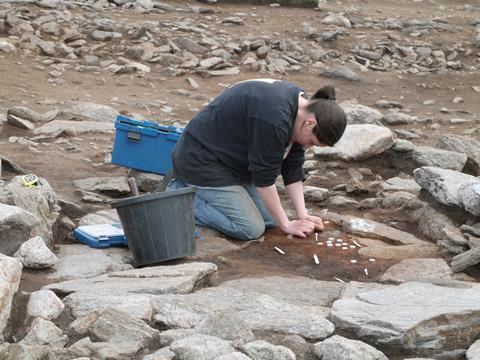
But what about inorganic material? ‘One of the challenges in archaeology is dating pottery,’ says Batt. ‘You find a lot of pottery: it’s well preserved, so there is a lot of it about. Any scientific method for dating pottery is very attractive.’ Currently the most well developed method is thermoluminescence dating. This makes use of trapped electrons in lattice defects that build up in crystalline mineral inclusions in pottery (quartz, feldspar and calcite) after firing. On reheating, the electrons escape and the amount of energy released, in the form of light, indicates the age of the ceramic. Batt herself is an expert in archaeomagnetic dating, which is used to date samples such as hearths, found on archaeological sites. But both of these methods have their limitations. ‘Something that would add into that mix would be really useful,’ Batt says.
Successful dating methods need a ‘clock’, a measurable property that varies from a fixed point in time. The ideal clock will be independent of environmental conditions, which explains why isotopic dating has become so important. Being controlled only by the half-life of the isotope, these methods are insensitive to changes in temperature or the surrounding chemical environment. Finding chemical processes that might provide reliable clocks is much more difficult – but perhaps not impossible.
Potted history
One researcher trying to do this is Moira Wilson, a physicist who has spent her career in construction science at the University of Manchester in the UK. Her method is based on their reversible rehydroxylation of fired clay ceramics over time, known as RHX dating. ‘The idea came about by accident,’ explains Wilson, when researchers in Manchester found they could use heat to shrink samples of brick of all ages, from modern to Roman. They found a relationship between the brick’s age and the amount of shrinkage; older bricks showing more shrinkage. ‘We proposed in the last paragraph [of our 2003 paper] in an off-hand way that this could possibly be exploited as a means of dating and the media of the entire planet descended on us,’ Wilson recalls. A new method for dating ceramics was an exciting prospect for archaeologists. ‘It’s quite rare to have a completely new principle for a method,’ says Batt.
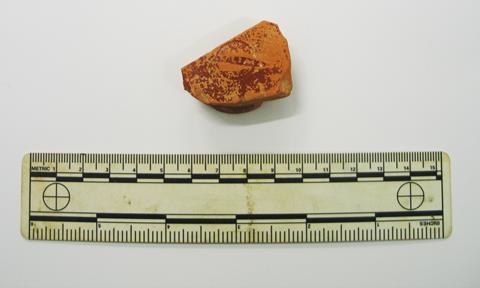
It has been known for a long time that fired clay bricks are subject to long-term moisture expansion which can cause structural stress. ‘This process occurs at slower and slower rate with time and therefore the general practice is to not use bricks that are fresh out of the kiln,’ says materials chemist Christopher Hall of the University of Edinburgh, UK, and part of the original RHX dating team. Hall says the key to their dating ‘clock’ was the discovery that the expansion occurs with defined kinetics. It follows a fourth root of time law (the gradient of a logarithmic plot of moisture expansion versus time is 0.25).1 ‘We could take an individual sample, re-fire it, measure its contraction and then re-expose it to moisture and allow it to expand again. We then measure its expansion rate constant and work out from that how long it would take to get back to the state that we found it in,’ he explains.
The cause of this time-dependent expansion is the rehydroxylation of clay minerals. During firing at over 400°C, chemically combined water is driven off. ‘You start to destroy the hydroxyl groups that are associated with the clay,’ says Hall. ‘Two neighbouring hydroxyl groups react to eliminate a water molecule and leave one bridging oxygen.’ On cooling, the reverse process occurs and water becomes chemically associated with the clay minerals. ‘My own view is essentially it’s the beginning of the rock weathering process. Geologists know that rocks take forever to weather, but ultimately silicate rocks like granite will eventually turn to clay, and I believe that essentially what we are seeing is the beginning of that process,’ says Hall.
Early on, Wilson and Hall realised that a dating methodology based on measuring expansive strain was not going to work: reheating caused micro-cracking in samples which ‘mopped up’ some of the post-reheating expansion. They looked for other markers. ‘We found that there was a mass change, and the mass change showed the same fourth root of time kinetics as the strain did,’ says Hall. ‘We decided that the mass measurement was more sensitive.’ Using samples first dried and conditioned in a controlled environment, they measured masses before and after heating to 500°C to dehydroxylate. Taking mass measurements over a period of days they could find the rate of mass gain, known as the RHX rate constant.
Early on, Wilson and Hall realised that a dating methodology based on measuring expansive strain was not going to work: reheating caused micro-cracking in samples which ‘mopped up’ some of the post-reheating expansion. They looked for other markers. ‘We found that there was a mass change, and the mass change showed the same fourth root of time kinetics as the strain did,’ says Hall. ‘We decided that the mass measurement was more sensitive.’ Using samples first dried and conditioned in a controlled environment, they measured masses before and after heating to 500°C to dehydroxylate. Taking mass measurements over a period of days they could find the rate of mass gain, known as the RHX rate constant. ‘The original idea, which I think is still very much at the heart of our protocol, is that this will self-calibrate for each sample,’ says Hall.
‘The original idea, which I think is still very much at the heart of our protocol, is that this will self-calibrate for each sample,’ says Hall. Radiocarbon dating for example, must be calibrated using carbon-dated tree rings whose exact year of formation are known from dendrochronological determinations. The calibration is needed because atmospheric carbon-14 concentration have not remained constant over time, due to changes in the earth’s magnetic field, fossil fuel burning, and nuclear testing.
But unlike radiocarbon dating, the rehydroxylation reaction is not independent of its environment. The rate constant is temperature dependent and therefore to find an accurate rate constant the rehydroxylation needed to be carried out at the weighted average temperature the object has experienced – its ‘effective lifetime temperature’. ‘With archaeological sites, for soil burial or in marine environments, the environmental temperature is actually quite well known, one can work it out from climatological information,’ says Hall. The amounts of water required to sustain the RHX reaction is so minute that humidity is not a factor, although it does needs to be controlled carefully during mass measurements.
In need of validation
The team have published dates for several pottery objects including a seventh century CE Anglo-Saxon loom weight, excavated in 2007 and previously dated from associated bone. Wilson is also working on samples of samian ware, a type of fine reddish-brown pottery made in the Roman empire from first to mid-third centuries CE. ‘The thing with samian ware is that they have makers marks on them and it is known when the makers were working, so we know the age within 20 years or so,’ says Wilson. She dated a sherd from a site in Hampshire, with the mark of Damonus of La Graufesenque (a famous production site in Gaul); dated to 45–75 CW from the stamp, and 59±30 CE by RHX dating.2
If anybody opens the lab door, that’s it, the data set is destroyed
But over a decade Wilson and Hall have published only a few archaeological dates. Hall says there are still some tricky methodological issues to resolve. ‘We do not regard it as a validated method yet because other people are not using it,’ he says. Progress has been slow due to the complexity of the challenge, particularly measuring the minuscule mass changes involved. ‘The acceptable fluctuation is maybe two or three tenths of a microgram,’ says Wilson. This requires a microbalance capable of measuring a ten-millionth part of a gram inside a chamber with very tightly controlled temperature and humidity.
The measurements also need extremely stable laboratory conditions: ‘If anybody opens the [laboratory] door, that’s it, the data set is destroyed,’ she says. Previously, each rehydroxylation measurement took at least 10 days, but Wilson is confident that she has found a way to speed this up and plans to publish her improved method in the near future.
There are also problems caused by the nature of the archaeological ceramics. ‘[A ceramic is] made from a combination of materials and then used, so it has residues from its use and then its buried,’ says Batt. ‘Accounting for all those different changes is a challenge, as it was with radiocarbon 50 years ago.’ Large errors also occur if ceramics have undergone heating in their lifetimes which will reset the rehydration process. In fact Wilson found this situation with a brick that gave RHX dates 400 years younger than its known age. It was subsequently found to have been exposed to high temperatures in 1944, resetting the RHX clock.
Testing their metal
Dating metals poses an even bigger problem than dating ceramics, with currently no widely used scientific dating method. No one had found a measurable property that changes regularly with time. But most metals do undergo significant chemical change with age – they corrode. So could this be used to design an accurate dating method?
Chemist Antonio Doménech-Carbó at the University of Valencia in Spain thought it was worth trying. ‘We detected the possibility of monitoring the advance of the corrosion using electrochemical methods,’ he says. Together with collaborator Fritz Scholz from the University of Greifswald in Germany, Doménech-Carbó has developed an electrochemical technique that uses the composition, rather than the extent, of corrosion to calculate an object’s age.
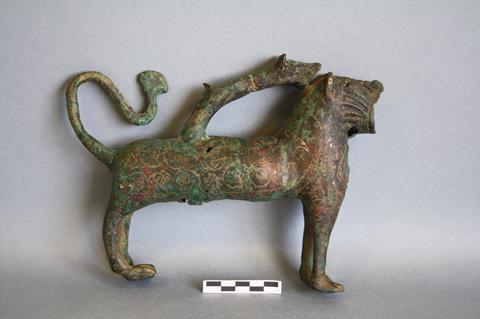
The basis of their dating clock is the changing nature of corrosion layers with time. Corrosion starts with a primary ‘impermeable’ patina of metal oxide but with time this primary patina expands, forming a secondary patina, characterized by lower crystallinity and higher oxidation state corrosion products. These changes are time-dependent. ‘Our first study was on lead dating, and based on our studies of several ancient objects, the metal is covered by a patina of litharge (a mineral form of lead(ii) oxide) and then a secondary patina of porous litharge, including lead(iv) oxides.’ Doménech-Carbó has also studied copper and bronze artefacts. Copper is covered by a cuprite Cu2O layer, which slowly converts to a layer containing tenorite (CuO), the amount of tenorite increasing over time.
Doménech-Carbó and Scholz realised that if they could measure the ratio of the metal ions in each oxidation state, they could calculate an age. ‘What was very surprising was that under certain conditions this corrosion clock goes even paced, so that you can really date samples if you have conditions that are very consistent over very long periods,’ says Scholz. One archaeological metal that can’t be dated this way is iron, Scholz says, whose corrosion is very dependent on environmental conditions, as well as varying with alloy type and composition.
Doménech-Carbó turned to Scholz for the perfect method to measure this ratio. Scholz had previously developed an electrochemical method called voltammetry of immobilized particles (VIMP), a non-destructive ‘one touch technique’.3 ‘Electrochemistry is extremely sensitive: because of the Faraday laws, you get a huge charge for small amounts of the compound,’ says Scholz. His technique uses a graphite bar electrode soaked in paraffin to touch the surface of the object. ‘It’s a mechanical transfer of the most tiny traces of the surface to that electrode – in most cases nanogram amounts,’ he explains. Using a standard electrode to complete the electrochemical cell, current–voltage curves record cathodic peaks at the reduction of the different metal ion species. ‘Since we are determining the ratio of signals, the absolute amount of [corrosion product] sampled is without any meaning, so that’s a big advantage,’ says Scholz.
Unlike RHX dating, this method does need calibration using objects of known date, exposed to a similar environment, so it’s important to have an idea of the objects ‘corrosion history’. ‘We have [used] Roman coins with defined ages because there is the name of the mint, but in the case of more ancient metal objects they also find other associated [buried] objects available for calibration,’ says Doménech-Carbó. Unfortunately calibration will be needed for each different environmental context which differs from radiocarbon dating. Early on, Libby worked out that carbon-14 levels were the same in all locations at any one time, making radiocarbon calibration relatively simple.
Objects they have dated include a series of 16 leaded bronze which are artificially patinated to create a characteristic dark grey/green surface. The samples spanned from Roman sites in Spain and Jordan to modern statues. In this case an age was found using the ratio of PbO to Cu2O. Using samples of known date, they have constructed a calibration curves that covers several thousand years in some cases.4
Gold standard
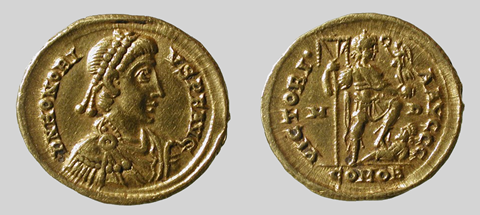
Prized for its lack of corrosion, gold may seem like a bad candidate for electrochemical dating, but in fact Doménech-Carbó and Scholz have found it can also be dated this way. ‘It turned out that the surface of gold is also changing at a very slow pace. It’s not really an oxide layer which grows there, it’s more an accumulation of defects.’ explains Scholz. What is actually happening is not well characterised, but they think it is the result of adsorption of oxygen species and an exchange process where oxygen atoms penetrate into deeper layers. VIMP studies, using a hydrochloric acid electrolyte, have shown the oxidation of gold to gold(iii) chloride complexes as well as a small peak attributed to the oxidation of the electroactive gold sites, and the ratio of these signals is age-dependent.5
The team used a series of well‐documented gold specimens from museums for calibration, covering the last 2600 years. Perhaps unsurprisingly, they found that of all metals, the corrosion clock for gold proceeded at the most constant pace, being practically independent of the environment in which the object had been found or stored. ‘You can date gold pieces which have been kept under very different conditions,’ says Scholz. ‘Of course the conditions have to be that nobody has polished the gold coins!’
But the precision is still far from that achieved with radiocarbon dating. Doménech-Carbó says it does depend on the material, but their dates are currently plus or minus 100 years. More calibration information could improve this, but ‘the drawback of electrochemistry is that we need to assume that the corrosion has operated uniformly’ and this will clearly not always be true, admits Doménech-Carbó. It means the method is currently limited to a subset of object that have undergone moderate corrosion in atmospheric or soil conditions that match objects studied so far. Even with its limitation, a method that can date metals is a big advance. ‘I am very optimistic,’ says Scholz, ‘I think that many laboratories and institutions are interested.’
Both RHX dating and electrochemical dating are experiencing the sorts of teething problems that are common when developing analytical methods. ‘It sounds so easy,’ says Wilson and she recalls the archaeologists who were surprised when she wasn’t able to get them a date for their sample within a week. ‘After a week [the sample] was still drying,’ she says. But she has confidence that she can now speed up the process. ‘I am not going to let it go at this point.’
Wilson suggests the problems they are facing seem very similar to those described by Libby in his account of developing radiocarbon dating. ‘Of course carbon-14 is an interesting comparison,’ agrees Hall. ‘They benefited from having a whole lot of very high performance equipment after the second world war which helped them, but it’s taken a long time for it to be established.’ But without similar resources, progress may be slower for these new methods. ‘You need to be successful very early on in order to secure enough funding to keep the developments going. I think there is lots of potential, but persuading funders to think long term is quite difficult,’ says Batt.
Rachel Brazil is a science writer based in London, UK
References
1 M A Wilson et al, Phys. Rev. Lett., 2003, 90, 125503 (DOI: 10.1103/PhysRevLett.90.125503)
2 M A Wilson et al, Proc. R. Soc. A, 2012, 468, 3476 (DOI: 10.1098/rspa.2012.0109)
3 A Doménech-Carbó and F Scholz, Acc. Chem. Res., 2019, 52, 400 (DOI: 10.1021/acs.accounts.8b00472)
4 A Doménech‐Carbó et al, Archaeometry, 2018, 60, 308 (DOI: 10.1111/arcm.12308)
5 A Doménech‐Carbó et al, ChemElectroChem, 2018, 5, 2113 (DOI: 10.1002/celc.201800435)
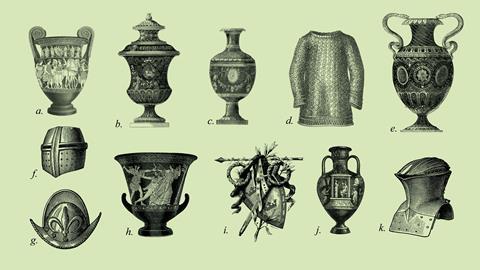
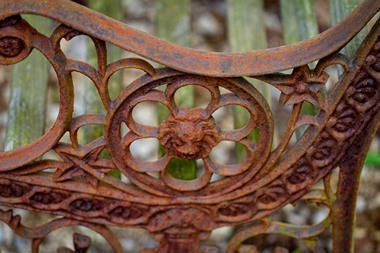
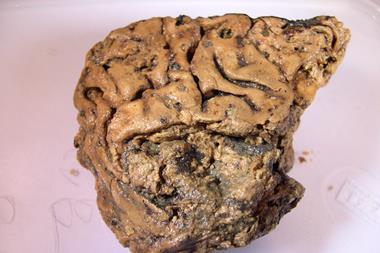

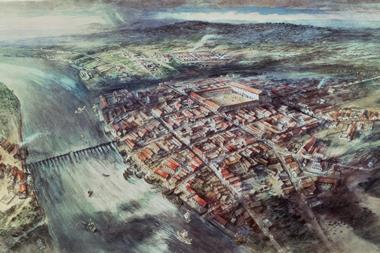
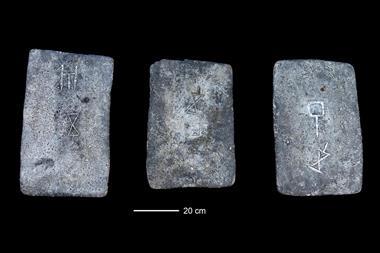







No comments yet